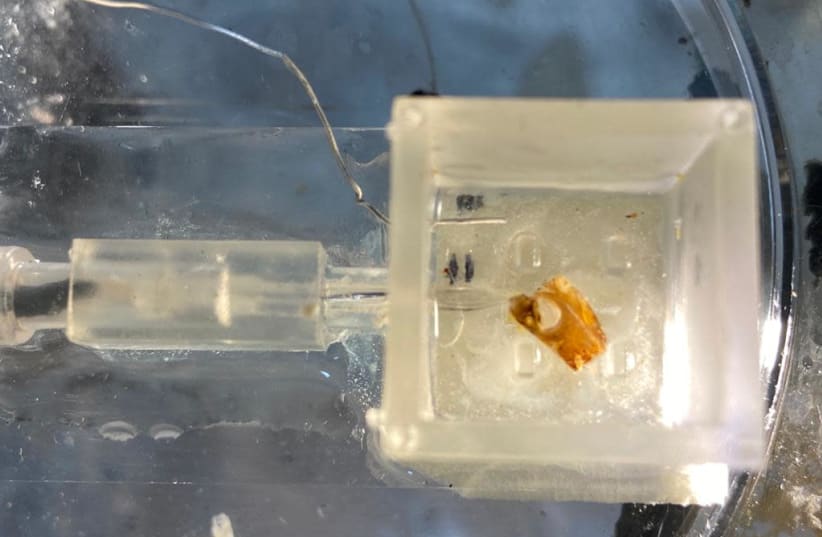In an unprecedented biological and technological development, researchers from Tel Aviv University (TAU) have successfully connected the ear of a dead locust to a robot that receives electrical signals from it, and responds accordingly.
Video from the study reveals extraordinary results: When the researchers clap once, the locust's ear hears the sound and the robot moves forward; when the researchers clap twice, the robot moves backward.
The study, which was published in the prestigious journal Sensors, sought to examine how to integrate advantages seen in biological systems into technology.
“We chose the sense of hearing, because it can be easily compared to existing technologies, in contrast to the sense of smell, for example, where the challenge is much greater,” says Dr. Ben M. Maoz of TAU's Iby and Aladar Fleischman Faculty of Engineering and the Sagol School of Neuroscience, who supervised the study together with Prof. Yossi Yovel and Prof. Amir Ayali, experts from Sagol and the School of Zoology.
“Our task was to replace the robot's electronic microphone with a dead insect's ear, use the ear’s ability to detect the electrical signals from the environment – in this case vibrations in the air – and, using a special chip, convert the insect input to that of the robot,” Maoz said.
The interdisciplinary study was led by Idan Fishel, a joint graduate student, and included researchers Dr. Anton Sheinin, Yoni Amit, and Neta Shavil.
In a multidisciplinary collaboration, the researchers were able to isolate and characterize the dead locust's ear and keep it "alive" - meaning functional - long enough to successfully connect it to the robot. In the final stage of the study, the researchers succeeded in finding a way to pick up the signals received by the locust’s ear in a way that it could be used by the robot to respond accordingly.
Maoz stressed the study's potential impact on the energy industry, saying that “It should be understood that biological systems expend negligible energy compared to electronic systems. They are miniature, and therefore also extremely economical and efficient.
“In general, biological systems have a huge advantage over technological systems - both in terms of sensitivity and in terms of energy consumption," he said. "This initiative opens the door to sensory integrations between robots and insects - and may make much more cumbersome and expensive developments in the field of robotics redundant."
He also elaborated on future sensory directions that research of this kind can take, including sight and smell. Certain animals have been known to see spectrums of light which go beyond the capabilities of the human eye. Others can sniff out drugs, bombs, certain diseases and even earthquakes.
"The sky is the limit," he concluded.
